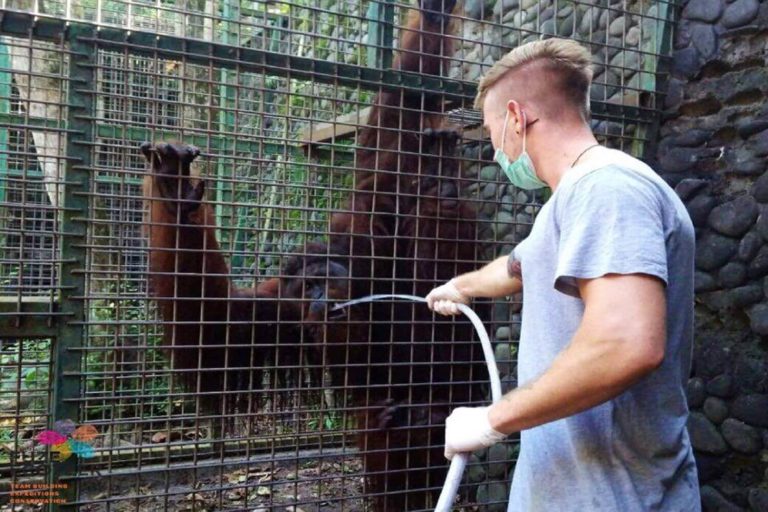Volunteer with Orangutans
Orangutans are the only great ape living in Asia. There are 2 true species and potentially a third sub species. Volunteer with Orangutans in Malaysia or Indonesia.
Orangutans are the only great ape living in Asia. There are 2 true species and potentially a third sub species. Volunteer with Orangutans in Malaysia or Indonesia.
Orangutan projects are very popular due to the fact that there are only two places in the world where they can be located, Malaysia or Indonesia. They are yet another species whose wild population is in decline and at risk from human activity such as deforestation due to logging and unsustainable agriculture destroying their habitat.
It is important to understand that whilst the rehabilitation of the animals are important it is not where the conservation efforts should stop. The preservation and restoration of their habitat parallelled with community education and involvement is just as important, if not more so. Without restoring their natural environment there is no longer a place for these animals in the wild which is why responsible volunteering is so vital in improving conservation efforts.
Many tourists begin their search for volunteering with orangutans with the idea of being able to spend a week cuddling cute animals. Whilst this is a problem in itself as many of the animals in sanctuaries are there for the purpose of rehabilitation, volunteering is so much more than that. When done right volunteering can provide you with a unique insight into the environmental issues that human activity causes subsequently prompting the demand for rescue centres and conservation projects. In addition, learning about being an educated consumer in order to contribute to the conservation efforts even after you return home from your trip is an invaluable resource to gain from any volunteering experience. Seeing first hand where products like palm oil originate and the effect it can have on the communities and the environment is the best way to pertinently involve yourself in the environmental issues we face as a generation. And of course, you will get to see the cute animals at the sanctuaries which you can’t see in person at home.
Rescue Centres are where animals which have been confiscated are taken for initial treatment and evaluation. These centres often have many types of animals. The purpose of these centres is to first help care for the animals incase they have any issues. They are then assessed to see if they are suitable for rehabilitation or if they need to be cared by humans for the rest of their lives.
Some animals may then move to the next stage or to a facility that can care for the animals long term.
Rescue Centres often have limited cage and enclosure sizes.
Rehabilitation Centres are often facilities that specialise in one and sometimes two specific species.
They would have specific training skills for the orangutans to learn and improve which will help them in wild. These maybe nest building, snake identifications or methods to dig out food.
You should not be able to touch any of the any animals going through rehabiliation as the main rule is that they should be weened off humans so when they are released they can live by themselves.
The last step are projects looking after wild orangutans by looking after their natural environment. This could involve habitat improvements like tree planting with fruit species esp figs and durians or counting nests to estimate their population.
At these projects you may or may not see wild orangutans and the activities change depending on the needs of the project.
You can expect lots of walking and searching for long periods in tropical rainforests, often in less than hospitable environments. Think sweety, humid, mosquitoes, and leeches and that is the reality of the tropical rainforest where Orangutans live.
Change can’t happen without people. People like yourself wanting to volunteer, the people who organise the projects and the local people who live there. Volunteer programmes are implemented to create change for the community and their environment and for tourists to be a part of this. It is imperative to have the local community on board with plans for change in order to avoid conflict and promote positive developments both in the present and the future. Everyone cares about the area they live in and what happens to it and so it is essential to make sure the people are educated on how to contribute to positive change for their environment and the species that inhabit it. Orangutan conservation organisations can begin the conversation surrounding actions for development but at the end of the day it is up to the locals to continue this work in future generations to come and education and community involvement are essential tools in support of this. Although, this is not to say that the local people are the only ones who benefit from the community projects. Having volunteers and people from the community working together enables everyone to learn from each other in one form or another and allows people from overseas to experience a new culture broadening their understanding of the world and gaining a better sense of connectivity with nature. Only those who truly immerse themselves in the experience will reap the benefits of their experience by continuing their efforts after their trip.


